How to cut back delphiniums for more flowers and healthier plants
Discover when and how to prune delphiniums to get the best from these dazzling spires of flowers


One of the mainstays of English cottage garden plants, delphiniums’ towering wands of colorful flowers make them much sought after on both sides of the Atlantic. These hardy perennials come in shades of blue, purple and white, with some pink and yellow varieties too.
It's important to know how to cut back delphiniums - and when - to encourage optimum flowering from these towering blooms. The flowerheads are made up of small, individual blooms, each studded with a contrasting center known as a ‘bee’, and set off by pretty lobed foliage.
While the main flush of flower spikes appears in June and July, with careful pruning you can enjoy a second display later in the season, while a final cut will help to prevent the spread of disease. The trick is knowing what to cut and when for the best results.
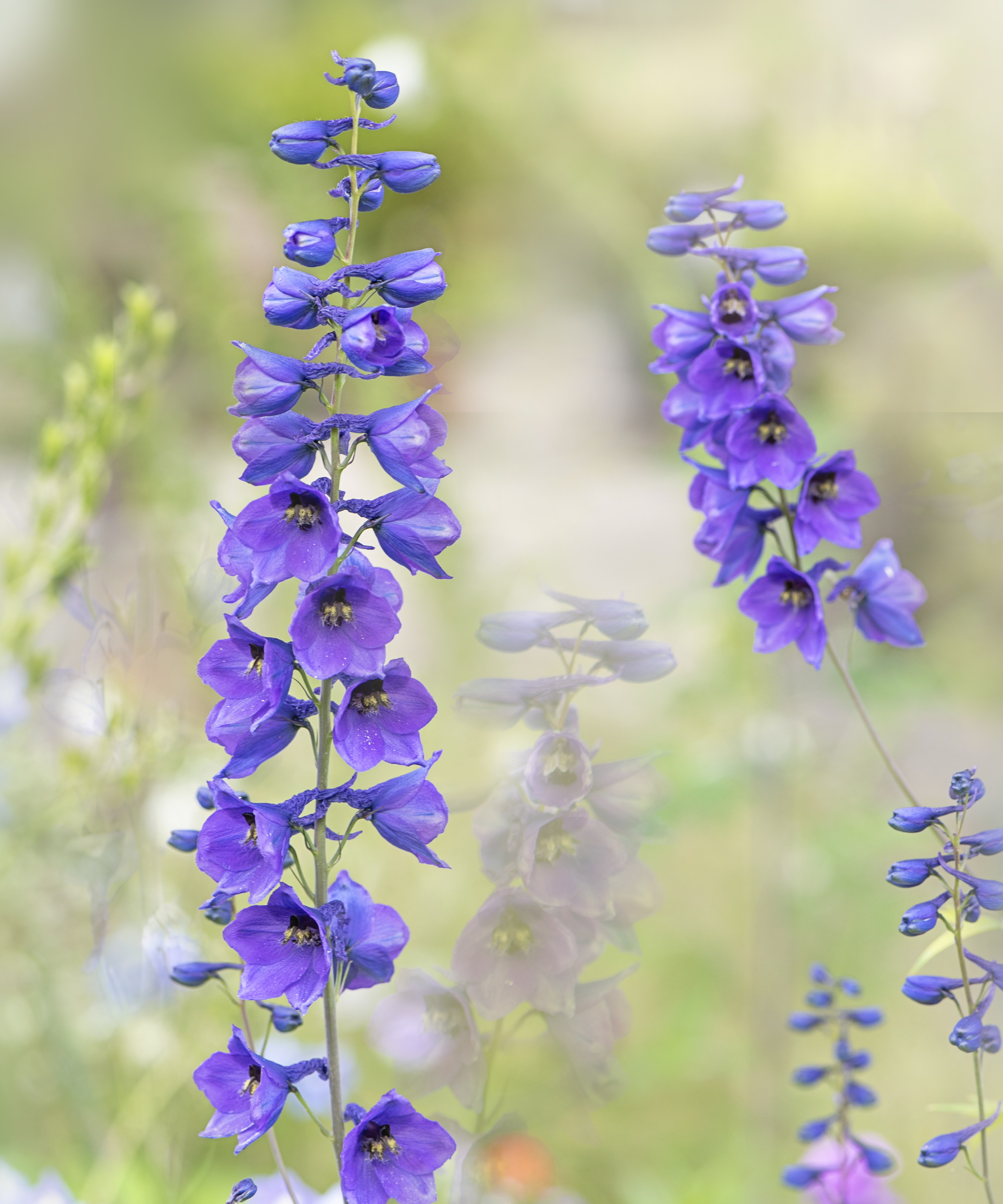
How to cut back delphiniums - the four key stages
Follow these expert steps for growing and cutting back delphiniums to prolong their flowering season.
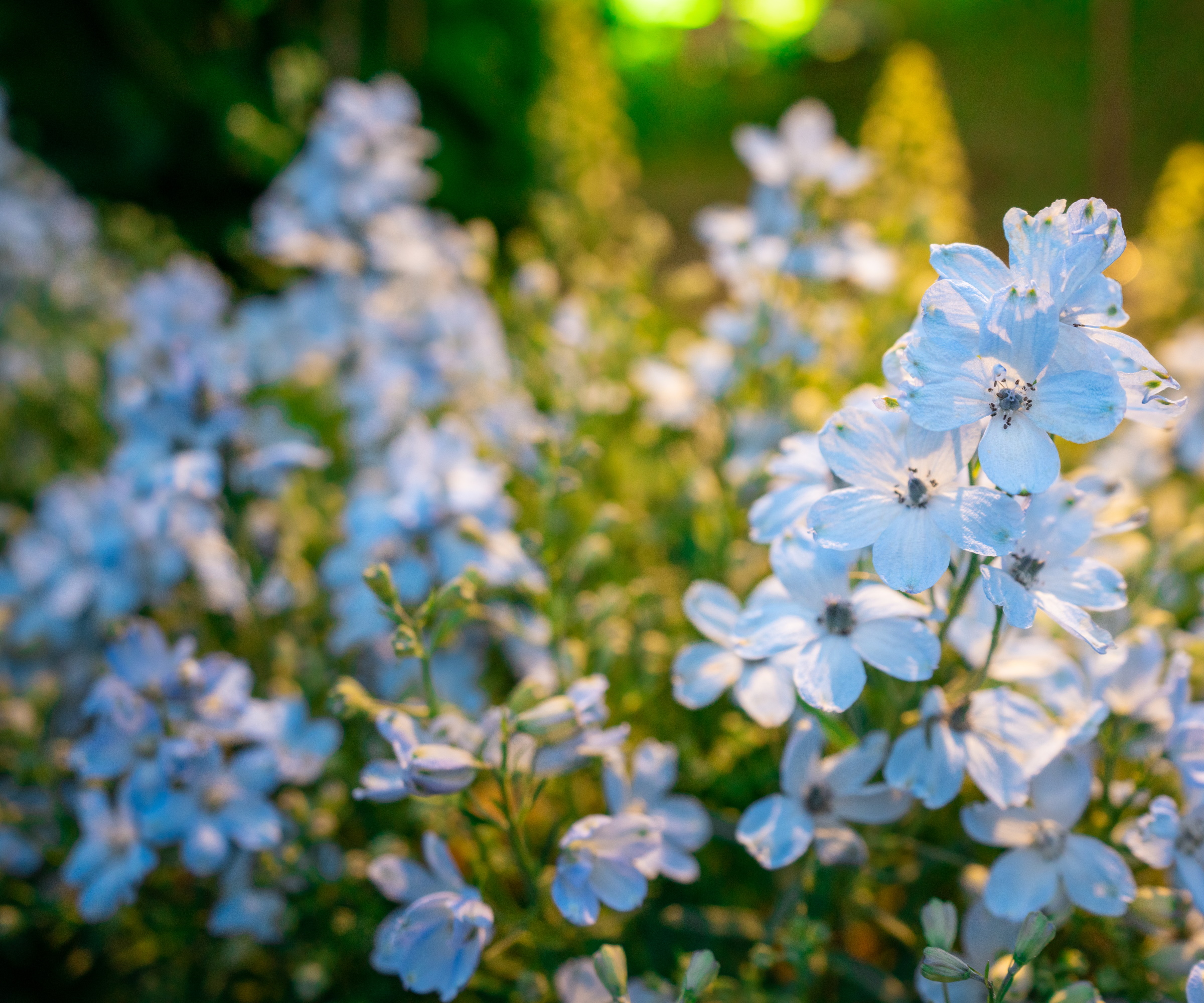
Growing delphiniums
Delphiniums’ showy blooms and sumptuous colors are very seductive, but these prima donnas can be quite fussy about their site and soil, so before rushing out to buy them, check first that they will like your conditions.
Mark Richardson, Director of Horticulture at the New England Botanic Garden at Tower Hill, says they grow best in hardiness Zones 3-7. 'They thrive in the northern US states, but tend to struggle in the heat and humidity of the south,' he says. 'These plants also prefer moist, organic, well-draining soils and will not tolerate saturated winter conditions or a lack of drainage, which will cause them to rot'.
'Delphiniums need a sunny site, too, requiring six to eight hours of sun each day in summer, with maybe a little afternoon shade to protect them from wilting in the heat,' he adds.
If these exacting requirements don’t quite match your own conditions, you could experiment with some of the new hybrids, which are more reliable in warm areas. Or in southern states try growing them as annuals, buying fresh plants or growing delphinium from seed each summer to bloom the following winter or spring.
A sheltered yard is ideal if you plan to grow the tall varieties, such as the Elatum Group and Pacific Hybrids which can reach dizzying heights of 6-8ft (1.8–2.4 m) or more, and are best staked to prevent their hollow stems breaking when laden with flowers.
In blustery sites, try one of the Delphinium New Millennium Series, which have the strongest stems, or the shorter Delphinium grandiflorum and Magic Fountain Series, which grow to just 1-3ft (30–90 cm). Remember, too, that delphiniums are poisonous, and all parts of the plant could be fatal if eaten, so they’re not a good choice for gardens used by young children or pets.

Mark Richardson is Director of Horticulture at the New England Botanic Garden at Tower Hill in Boylston, Massachusetts.
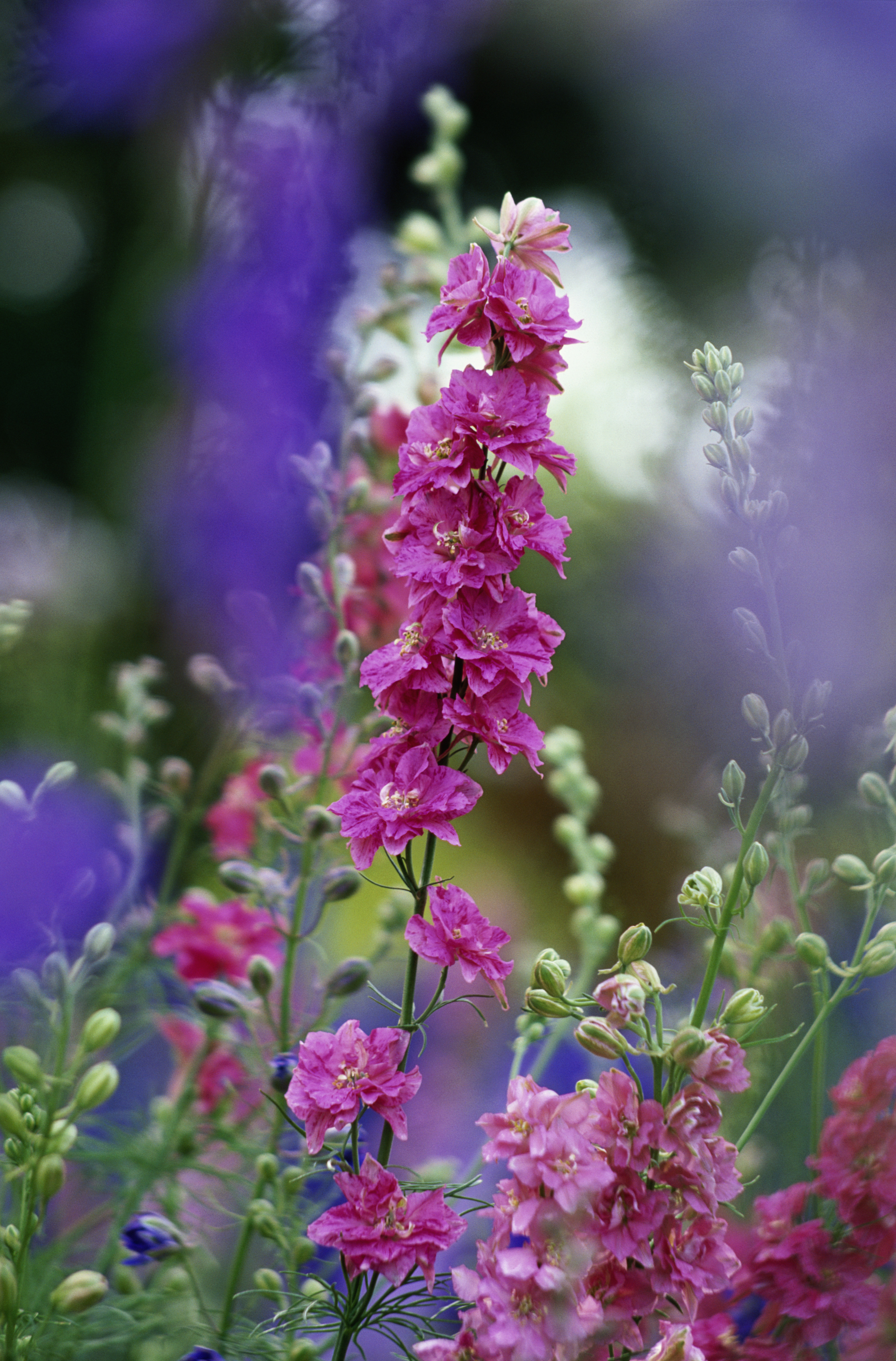
Initial cuts
Buy your delphiniums in pots in spring and plant them in soil enriched with organic matter, such as garden compost. Space plants well to allow plenty of air flow around the stems, which will help to prevent fungal diseases such as powdery mildew, and make sure that the top of the root ball is level with the soil surface to avoid stem rot. A thick layer of organic compost around the plants will also help the soil to retain water and reduce weed growth.
When plants are just a few inches high, remove all the stems bar three strong, healthy shoots.
On older plants, thin them out to 5-7 healthy stems. This will encourage the plant to put all its energy into producing a few large flowers spikes. On the tall varieties, add a stake for each of the stems, tying them in with soft twine, and continue to do so until your delphiniums reach their full height. Keep plants well-watered during dry spells.
Because these plants are toxic it’s important to always wear gardening gloves when handling them or cutting them back.
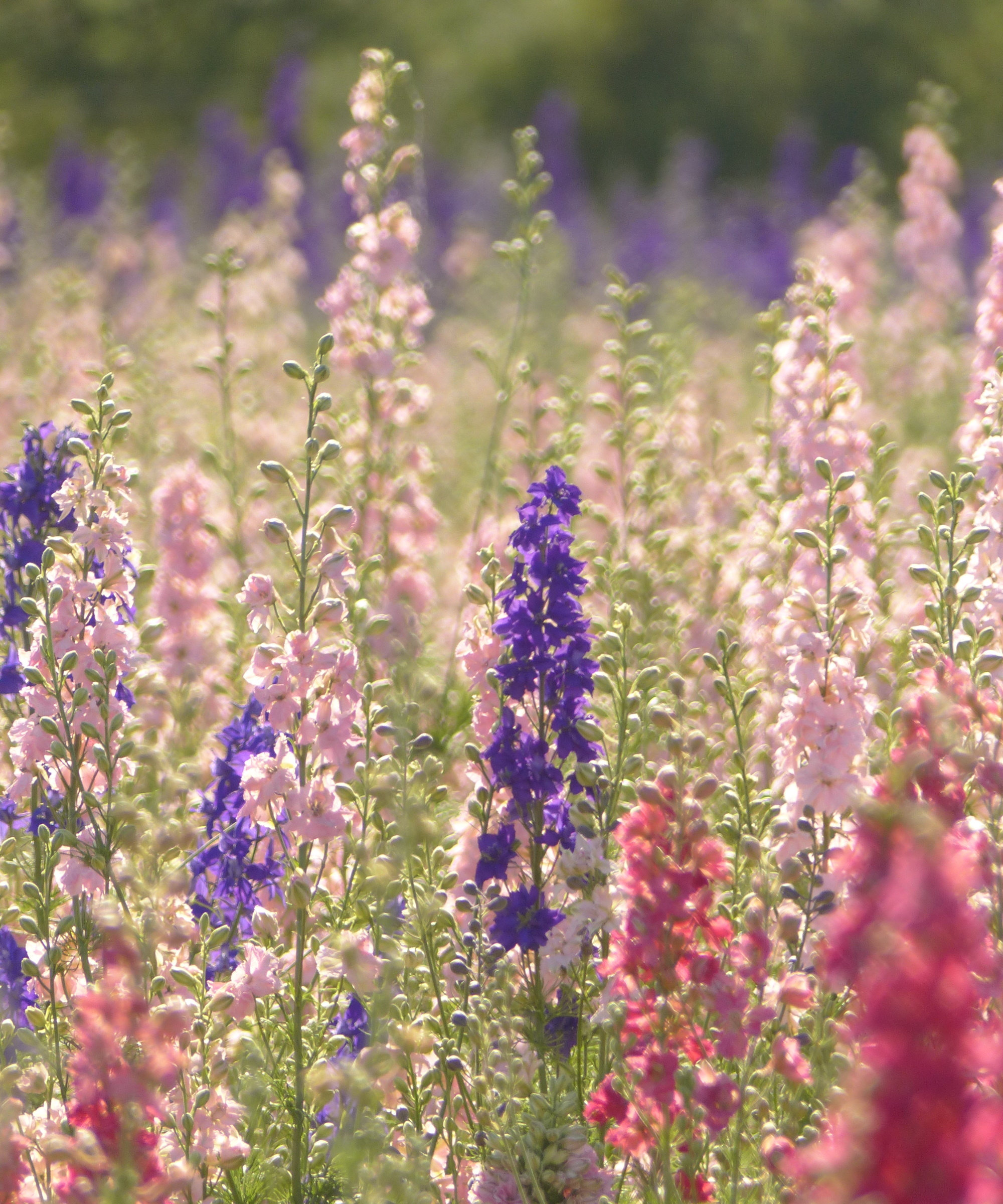
Prompting a second flush
The main flush of flowers will appear in midsummer, but plants can be encouraged to bloom again later in the summer and into early autumn, albeit with shorter spikes and fewer flowers.
'Simply cut the flower stalks back to about 2in (5 cm) from the ground after they are done blooming,' advises Barb Balgoyen, Technical Customer Care Representative for wholesale nursery Walters Gardens, which grows a range of delphiniums. Barb adds you should use clean, sharp secateurs to cut the flower stems, while leaving the basal foliage intact.
'Dwarf varieties grown in large pots or used to edge a cottage garden border are cut back in the same ways as the taller varieties,' says Barb Balgoyen. Like the larger forms, they are also best cut back to the ground in the fall.
Give your plants a dose of potassium-rich fertilizer at this point to bolster their nutrient reserves and prompt repeat flowering. New stems will soon appear, and in late summer you will be rewarded with another flush of colorful blooms.
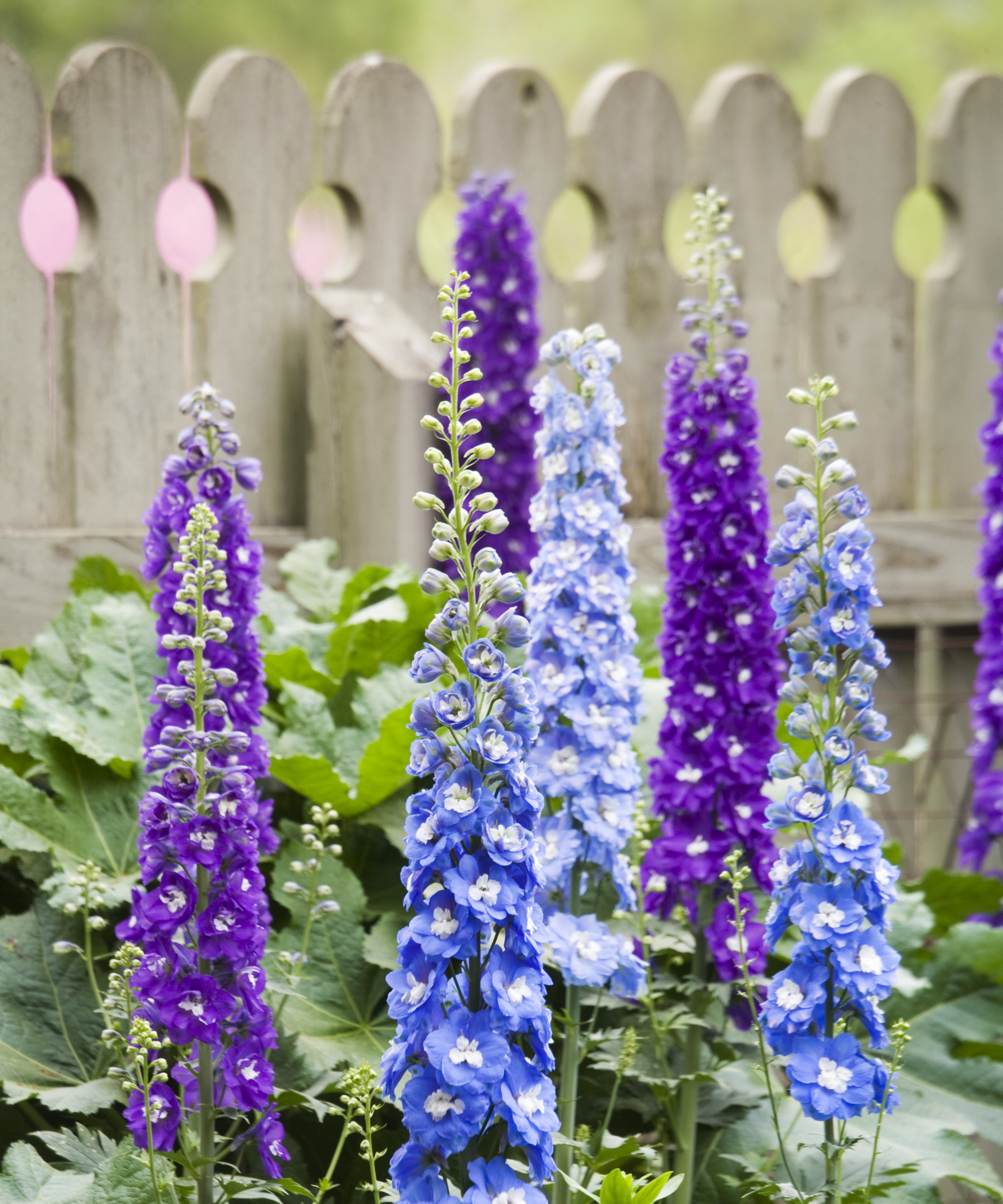
The final prune
Unlike some perennials whose foliage and seedheads stand well over winter, delphiniums tend to collapse and look unsightly, so it’s best to cut the whole plant back after all blooming is over and before winter arrives. Pruning them now also helps to prevent fungal diseases from developing on the dying stems.
The whole process will begin again when new shoots appear the following spring, when they will benefit from an application of general-purpose slow-release fertilizer, such as blood, fish and bone, to bolster growth.
FAQs
Can I leave more stems on my tall delphiniums?
You can allow more stems to grow on your delphiniums, but this will result in shorter plants and, if they are too congested, the lack of air circulation around the flower spikes may encourage powdery mildew to develop.
Why have my delphiniums disappeared this year?
Slugs and snails may have munched the young growth, so be vigilant in spring. To keep these pests at bay, try organic slug pellets or a biological control for slugs, or pop out after dark and remove them by hand. Another reason for their disappearance could be because your plants have come to the end of their natural lifecycle, since they are short-lived perennials and many only live for three to four years.
Follow this care and cutting regime and you should enjoy a dazzling performance from these show-stopping flower towers for many years to come. For more information, see our guide on what to do with delphiniums after they finish flowering, to keep your perennials in top health.
Sign up to the Homes & Gardens newsletter
Design expertise in your inbox – from inspiring decorating ideas and beautiful celebrity homes to practical gardening advice and shopping round-ups.

Zia Allaway is a garden book author, editor, and journalist, and writes for a range of gardening and women’s magazines, including Easy Gardens, Homes & Gardens and Livingetc, as well as The Guardian and The Daily Telegraph newspapers. She has also written books for the Royal Horticultural Society and Dorling Kindersley publishers, including Eco-Gardening, Compost, Low Maintenance, Practical House Plant Book, Practical Cactus & Succulent Book, Indoor Edible Garden, What Plant Where, and the Encyclopedia of Plants and Flowers.
-
 How to grow astilbe – expert advice on cultivating this shade-tolerant flowering perennial
How to grow astilbe – expert advice on cultivating this shade-tolerant flowering perennialShade-tolerant and pest-resistant - astilbe are hardy and tough perennials that can thrive in many settings
By Ellen Wells Published
-
 Vintage prints are making a comeback – designers say to look out for these 5 nostalgic patterns this year
Vintage prints are making a comeback – designers say to look out for these 5 nostalgic patterns this yearThese vintage-style patterns are all the rage right now, and we spoke with design experts to learn how best to style them in the home
By Eleanor Richardson Published